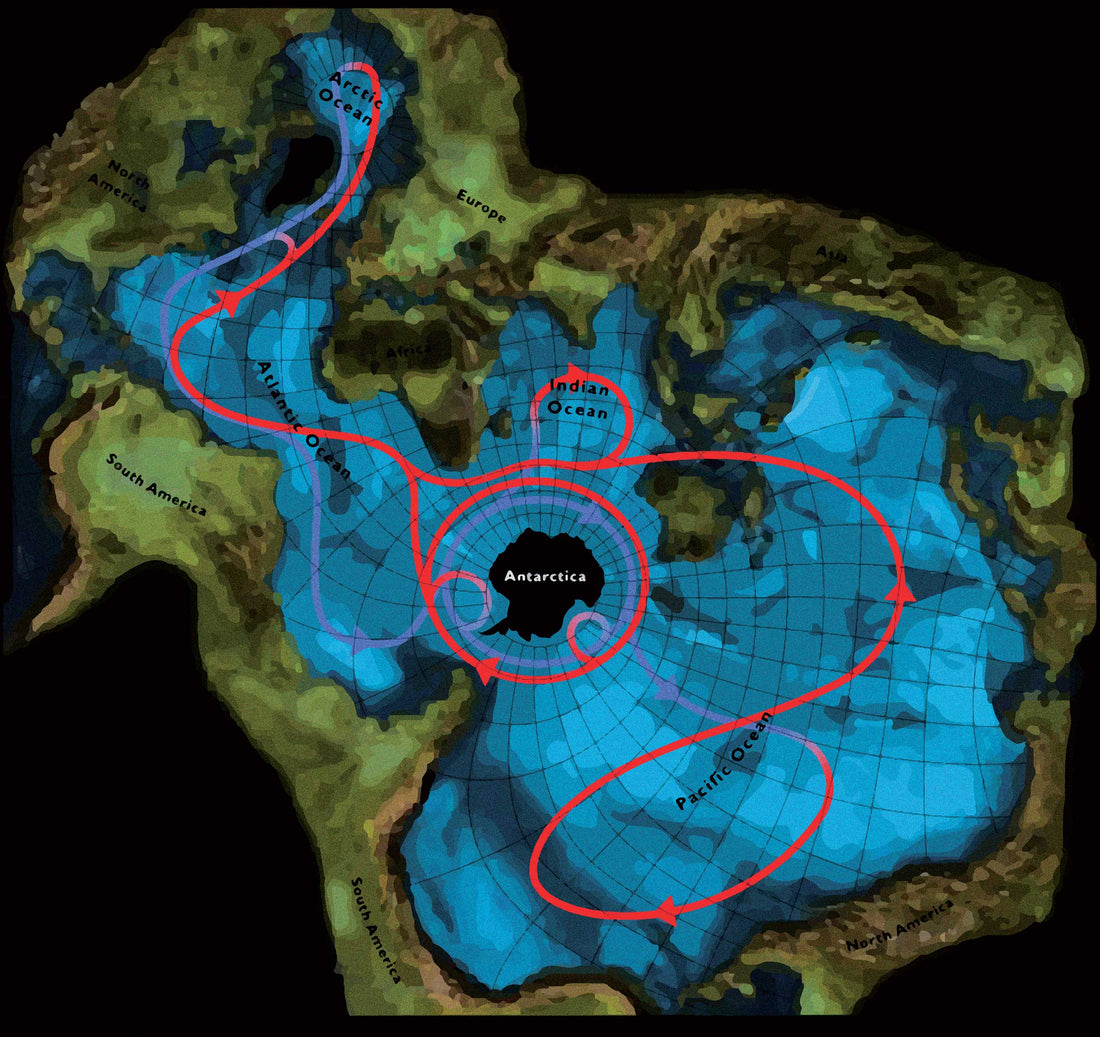The world ocean covers 71% of the earth surface. Not surprisingly, the ocean surface can have many faces. It is super cold and covered in ice close to the poles, it is stormy and rough in the subpolar North Atlantic or under the furious fifties in the Southern Oceans or it is absolute calm, rainy and warm below the doldrums, a windless belt embracing the world just north of the equator. No matter how different the ocean looks like, it is still one. One ocean with great value for human life, our economy, culture, social life and for the wellbeing of our planet's wildlife below and above the ocean.

Gannet cliffs of Hermaness, National Nature Reserve, Shetland Islands. © Richard Shucksmith. Featured image (top above title): Our Global Ocean Blue Design © Crùbag, based on the Spilhaus Global Ocean Map Projection by Prof Michael P. Meredith, & Jamie Oliver, British Antarctic Survey. 2020
But all this is under threat. It is threatened by climate change. Global warming not only raises the temperature on land but also that of the ocean. In fact, over 90% of the heat gained by global warming is absorbed by the ocean. The ocean acts as a large storage not only for heat but also for 25% of the carbon emitted by human mankind. And this storage comes with severe consequences, for us, for marine life and ecosystems, and for the climate of our planet.

Ocean waves. © Sam Jones
The ocean is not still. It is in motion. The oceans' conveyor belt connects the different ocean basins with each other and the ocean surface with the deep. It is transporting a vast amount of heat and energy around the globe, impacting the weather and climate all over the world. It is also important for the distribution of nutrients, carbon and oxygen. The conveyor belt consists of currents either driven by the wind at the surface or by changes in temperature and salinity (thermohaline currents) in the deep. Warm water is light and stays on the ocean surface; cold and salty water is dense and sinks to the bottom.

Spilhaus Global Ocean Map Projection. © Prof Michael P. Meredith, & Jamie Oliver, British Antarctic Survey, 2020.
The main engine of the conveyor belt is located far up in the North Atlantic between Europe and Greenland. The extension of the Gulf Stream carries warm water from the tropics into the colder northern latitudes. The water cools and partially evaporates, which increases the salt content in the surface waters. The water becomes denser and sinks, where it becomes a new deep ocean water mass. To make space for new incoming water masses, these dense waters flow south, all the way down to Antarctica. Eventually, wind-driven upwelling or mixing return the dense deep waters to the surface, where they will continue their never-ending trip around the world as part of the conveyor belt.
"The climate problem is an ocean problem." Prof Stuart Cunningham
What happens now with all that heat and carbon our ocean gained through anthropogenic climate change? The heat and carbon gained at the surface are transported into the deep ocean by the conveyor belt. That allows additional heat and carbon to be absorbed by the ocean surface, which helps to moderate the warming of the atmosphere. But this also means that the entire ocean is getting warmer and more acidic. This has severe consequences for life below and above the ocean surface. A warmer ocean is losing its breath. The blue lung of our planet provides 80% of the oxygen we breathe but its oxygen content is decreasing due to warming. Warmer water can hold less oxygen than colder water. Consequently, the upper ocean is losing oxygen. But warming also leads to changes in the ocean circulations, mixing and oxygen respiration which leads to a decrease in oxygen in the deep ocean.

Deep-sea fish. © Superjoseph
As the ocean warms sea level rises. Warmer water is lighter than colder water and needs more space. About 42% of ongoing sea-level rise is due to this thermal expansion. The other 58% is caused by the addition of seawater, mainly due to the melting of land ice. Sea level rise especially affects coastal areas and islands. Close to the coast, homes of humans and wildlife alike are threatened by the sea through floods, storms, or tsunamis.
A warmer ocean can make tropical cyclones like hurricanes more destructive. It can intensify the wind speeds of tropical cyclones. As a warmer atmosphere can hold more moisture, the rainfall rates of tropical cyclones are increasing. In combination with sea-level rise, this can increase the damage a tropical cyclone causes when hitting land.

CMIP6 Mean temperature (T) change in degree Celsius. Medium Term (2041-2060) SSP5 8.5 (rel.-to-1850-1900) annual (34-models). © IPCC, 2022.
How does a warmer ocean impact the conveyor belt? One of the major predictions of climate change in the 21st Century is a slowing of this circulation, and this will have profound impacts on how Earth's climate changes. For that, we look again at the engine of the conveyor belt in the North Atlantic. Model simulations suggest the conveyor belt will slow down in a warming world. This is due to a change of fuel. The ocean warms and at the same time, it gains more freshwater due to more rainfall and ice melt. The surface waters become lighter, the sinking in the conveyor belt reduces and the entire circulation slows down.
Because of its importance, the conveyor belt is continuously observed in the Atlantic since 2004. The observations show that it varies from year to year. However, based on these observations, it is too early to say for sure whether there are any long-term trends in the conveyor belt. It is likely that it will weaken but the changes will be slow. That does not diminish the crucial role the conveyor belt plays in the global climate.










